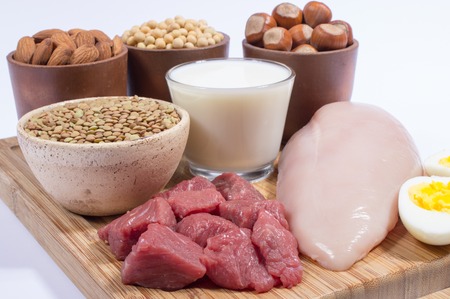Did you know that older adults need more protein? Close to half of older adults get less than the amount of protein suggested by the National Academy of Medicine, according to a 2019 study in The Journal of Nutrition, Health & Aging.
The Recommended Dietary Allowance is 0.36 gram per pound of body weight daily, or 54 grams for a 150-pound person.
Why Older Adults Need More Protein
But older adults who hit these recommendations may still have a protein shortfall. According to Lonnie, although you might consume the same amount of protein you did in your younger years, your body might not be able to use it as well. Another factor is inflammation from infections and other medical problems, which hikes protein needs. You probably have more comorbidities, injuries, chronic diseases, or surgery in older age, Lonnie says. Plus, older adults are more likely to have chronic systemic inflammation, which raises the body’s protein requirements.
Some medications, like steroids, may also ramp up protein needs. And if you don’t get enough in your diet, the body will pull it from your muscles, says Mary Marian, RDN, director of the Didactic Program in Dietetics at the University of Arizona in Tucson. That can lead to further loss of muscle and strength.
What’s the Right Amount?
Because of the factors above, research supports increasing the recommended intake of protein for older adults by up to 50 percent. That means people over age 65 should strive for 0.45 to 0.55 gram of protein per pound of body weight daily, or about 68 to 83 grams for a 150-pound person.
If you’re trying to lose weight or you exercise regularly, especially if you strength train, you should stick with the higher end of that range to help preserve and add muscle, and increase satiety. Older adults with chronic diseases should get even more protein—0.68 gram per pound, or 102 grams for someone who weighs 150 pounds—according to a position paper published in 2013 by the PROT-AGE Study Group, international health experts who convened to develop protein guidelines for older adults.
Your muscles prefer that you spread your protein out over the day. In fact, Lonnie says that downing a large amount of protein at dinner, common in American diets, won’t help you build muscle. So, depending on your weight, you’ll want to aim for about 25 to 30 grams of protein at each meal, she says.
Be aware that while protein is quite satiating, which makes increasing your intake useful if you’re trying to lose weight, there’s some question about whether this might make someone who’s underweight feel full and eat even less.
In this situation, it’s wise to work with a qualified dietitian, who can look at your health history, weight, appetite, current diet, and medications, and help you determine how to get enough nutrition to stay healthy and strong. And note that while most older adults should be able to tolerate adding protein to their diets, this could exacerbate chronic kidney disease, Marian says.
The Best Sources of Protein
Meat, poultry, seafood, and dairy provide protein, as you probably know. But you can also get plenty from plant sources such as beans, lentils, nuts, seeds, soy, and whole grains.
The main difference between animal and plant proteins is the variety of amino acids they contain. Animal-based sources are considered “complete,” meaning they have adequate amounts of all nine amino acids the body must get through food.
Some plant foods, including quinoa and soy, are also considered complete. Certain others, such as grains and legumes, form complete proteins when eaten in the same meal (say, rice and beans or peanut butter on whole-wheat toast) or on the same day. If your primary sources of protein are plant-based, it’s a good idea to include a variety of whole grains, beans, and lentils in your diet so that you get enough of all nine essential amino acids.
A potential drawback to getting protein solely from plants is that you may have to eat a larger volume of food to get the amount of protein you would from animal sources. That can be difficult, Lonnie says, especially for older adults whose appetites may be less robust than they once were or who have trouble chewing.
So, consider a plant-forward eating style, which doesn’t preclude meat but relegates it to a lesser role. It’s one that more and more people are embracing. In 2020 the plant-based food market grew more than 25 percent—double that of the regular retail food market—according to a report from the Good Food Institute.
These foods can help you reach your protein goals:
• Beef, grilled, 3 ounces: 24 grams
• Chicken breast, cooked, 3 ounces: 24 grams
• Salmon, cooked, 3 ounces: 23 grams
• Tuna, 3.5 ounces: 19 grams
• Tempeh, ½ cup: 17 grams
• Greek yogurt, plain, nonfat, 5.5 ounces: 16 grams
• Tofu, ½ cup: 10 grams
• Beans, canned, white, ½ cup: 9.5 grams
• Edamame, shelled, ½ cup: 9 grams
• Hemp seeds, 3 Tbsp.: 9 grams
• Lentils, cooked, ½ cup: 9 grams
• Quinoa, cooked, 1 cup: 8 grams
• Whole-wheat pasta, cooked, 1 cup: 8 grams
• Almonds, raw, 1 ounce: 6 grams
• Buckwheat, cooked, 1 cup: 6 grams
• Egg, one: 6 grams
Click here to read more about why older adults need more protein.






